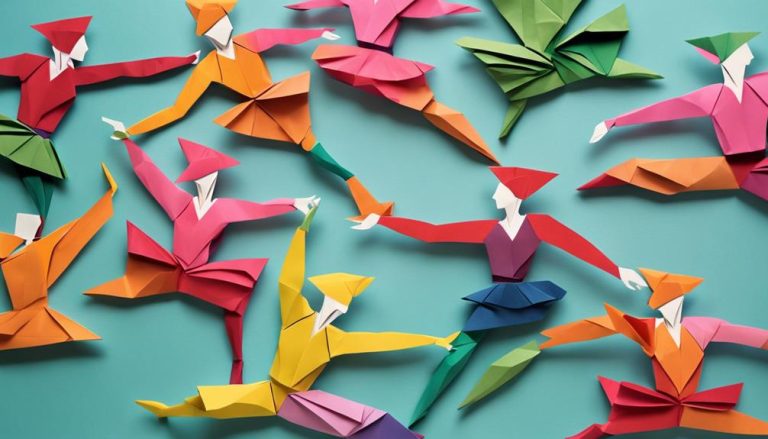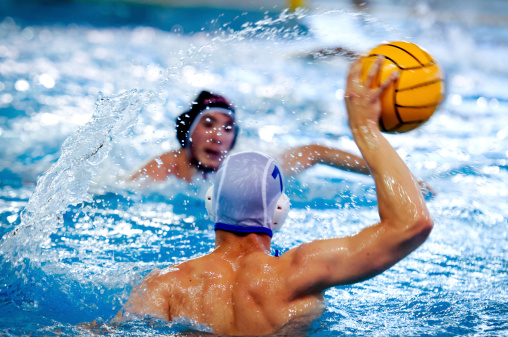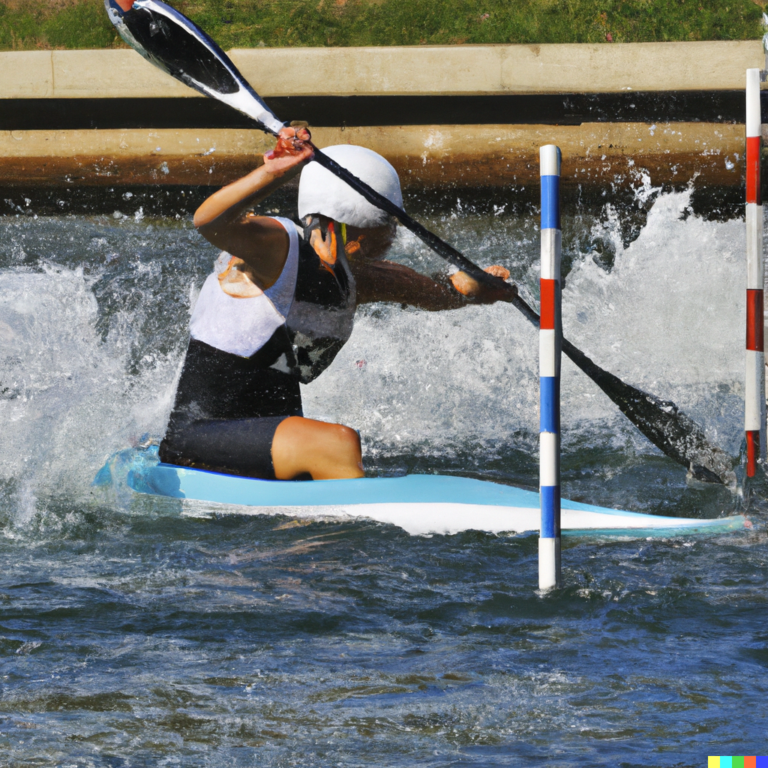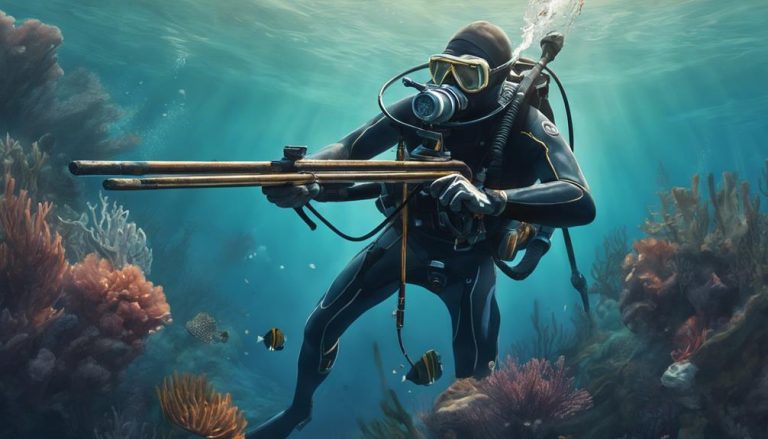General Rules of Sprint Kayaking
When you dip your paddle into the water, it's not just about propelling your kayak forward but also about adhering to a set of guidelines that govern sprint kayaking. Understanding the nuances of race distances, starting procedures, and racing tactics can make all the difference between a smooth glide to the finish line and potential penalties. Dive into the world of lane etiquette, penalties, and finish line protocol to ensure you navigate the waters of sprint kayaking with finesse and skill.
Equipment Requirements
When gearing up for sprint kayaking, you must ensure you have the necessary equipment to optimize your performance on the water. Paddle selection plays a crucial role in your kayaking experience. The type of paddle you choose can significantly impact your speed, agility, and overall efficiency. For sprint kayaking, paddles are typically longer and narrower to allow for powerful strokes and quick maneuvers. It's essential to select a paddle that feels comfortable in your hands and complements your paddling style.
Additionally, safety gear requirements are non-negotiable in sprint kayaking. Wearing a personal flotation device (PFD) is mandatory for all participants, ensuring your safety in case of any unexpected incidents on the water. Other safety essentials include a whistle to signal for help, a helmet for protection during challenging races, and appropriate clothing for the prevailing weather conditions.
Race Distances
Alright, let's talk about race distances in sprint kayaking. Sprint races vary in length, with the standard Olympic distance being a key benchmark. Understanding the different race distances is crucial for strategizing your training and competing effectively.
Sprint Race Lengths
Sprint kayak races typically vary in length, ranging from 200 meters to 1000 meters. When considering sprint race lengths, it's important to understand the unique challenges each distance presents.
- Shorter distances like 200 meters demand explosive power and speed.
- Mid-range races around 500 meters require a balance of speed and endurance.
- Longer distances such as 1000 meters test both physical and mental stamina.
Each race length calls for specific training techniques and nutrition tips to optimize performance, while paddle technique and hydration strategies play a crucial role in maintaining speed and energy throughout the race. Understanding the nuances of each distance can help you tailor your preparation and race strategy for success on the water.
Olympic Distance Standards
In considering the diverse race lengths in sprint kayaking, it is crucial to understand the Olympic Distance Standards that define the specific race distances athletes compete in at the highest level of competition. Olympic sprint kayak races typically cover distances of 200 meters, 500 meters, and 1000 meters. To excel in these events, athletes must focus on specific training techniques tailored to the demands of each distance. Nutrition plans play a vital role in ensuring athletes have the energy and stamina required to sustain their performance throughout these intense races. Injury prevention is key, with paddlers needing to maintain proper form and technique to avoid strain. Mental preparation is equally important, as athletes must cultivate focus and resilience to navigate the challenges of Olympic-level competition.
Starting Procedure
As you prepare for the starting procedure in sprint kayaking, focus on maintaining a steady grip on your paddle and keeping your body balanced. Proper starting technique is crucial for a successful race. When the moment arrives, remember these key points:
- Grip: Ensure your hands are positioned correctly on the paddle, ready to propel you forward with power.
- Posture: Keep your back straight and your core engaged to maximize your strength and stability.
- Focus: Concentrate on the upcoming race, visualizing your strategy and the strokes you will take.
Executing a strong start can set the tone for the entire race. Your race strategy should include planning how you will accelerate off the line, settle into your pace, and make any necessary adjustments based on your competitors and the conditions. By honing your starting procedure, you can give yourself an advantage right from the beginning, setting yourself up for a strong performance in the sprint kayaking event.
Racing Tactics
Developing effective racing tactics in sprint kayaking involves analyzing your competitors' strengths and weaknesses to strategically position yourself for success on the water. Strategy development is crucial in sprint kayaking races. Understanding when to make a move, where to position yourself, and how to conserve energy are all part of a winning strategy.
Timing execution is equally important. Knowing when to sprint, when to pace yourself, and when to push past your limits can make all the difference. Mental preparation is key; visualizing the race, staying focused, and maintaining a positive mindset can give you a competitive edge.
Physical endurance plays a significant role in executing your tactics. Building strength, stamina, and agility through training will help you perform at your best when it counts. Remember, each race is unique, so adaptability is key. By honing your strategy, perfecting your timing, and preparing both mentally and physically, you'll be well-equipped to tackle any sprint kayaking race with confidence and determination.
Lane Etiquette
When it comes to lane etiquette in sprint kayaking, understanding how to pass other paddlers and share the lane is crucial. This aspect of racing involves strategic maneuvering to maintain speed and position without disrupting others. By following these guidelines, you can navigate the course smoothly and respectfully, enhancing your overall performance.
Passing Other Paddlers
Navigating around other paddlers in sprint kayaking requires tactful maneuvers and strategic planning to maintain speed and efficiency. When overtaking fellow paddlers, remember to execute strategic maneuvers and utilize overtaking techniques effectively. To pass other paddlers smoothly, consider your speed positioning and adopt a drafting strategy to gain momentum while conserving energy. It's crucial to assess the situation, anticipate movements, and communicate with those around you to ensure a safe and efficient pass. By mastering the art of passing other paddlers with finesse, you can enhance your performance and stay ahead in the race. Keep these tips in mind for a successful sprint kayaking experience.
Sharing the Lane
To ensure smooth interactions on the water during sprint kayaking, understanding and adhering to lane etiquette is essential for maintaining a safe and efficient practice environment. When sharing the lane with other paddlers, proper lane positioning is crucial. Stay on your side of the lane to avoid collisions and ensure everyone has ample space to paddle comfortably. Be mindful of your surroundings and communicate with fellow kayakers to prevent any misunderstandings. Additionally, incorporating race strategy into your lane etiquette can enhance your training sessions. Practicing overtaking maneuvers and navigating around others gracefully can sharpen your skills and prepare you for competitive situations. By respecting lane positioning and integrating race strategy, you contribute to a harmonious and productive kayaking experience for all.
Penalties and Disqualifications
In sprint kayaking, competitors face penalties and possible disqualifications for violating the established rules and regulations during races. Penalties can be incurred for various infractions, such as obstructing other competitors, not following the designated course, or making illegal contact with another kayak. It is essential to understand the rules to avoid these penalties and maintain fair play on the water.
- Penalties: If you receive a penalty during a race, make sure to understand the reason behind it. Sometimes penalties can be appealed if you believe there was a misunderstanding or error in judgment.
- Disqualification: Being disqualified from a race is a severe consequence and is usually the result of a significant rule violation. It's crucial to race clean and fair to avoid disqualification.
- Appeals: If you feel that a disqualification was unjust or there were extenuating circumstances, there may be a process in place to appeal the decision. Make sure to follow the correct procedure for appeals.
Understanding the penalties and disqualifications in sprint kayaking is essential for all competitors to ensure fair and respectful competition.
Finish Line Protocol
After understanding the consequences of penalties and disqualifications in sprint kayaking, let's now focus on the crucial aspect of the finish line protocol for competitors. As you approach the finish line, timing accuracy becomes paramount. In close races, a photo finish may be needed to determine the winner accurately. Remember, every split-second counts in sprint kayaking.
When crossing the finish line, refrain from any premature celebratory gestures until the race officials confirm the results. It's essential to uphold sportsmanship even in the heat of competition. Respect your fellow competitors and the rules of the sport by accepting the outcome with grace, whether you win or lose.
Maintaining integrity in how you approach the finish line not only showcases your character but also contributes to the overall spirit of the sport. By prioritizing timing accuracy, respecting photo finishes, and demonstrating sportsmanship in your celebratory gestures, you embody the true essence of sprint kayaking.
Frequently Asked Questions
What Type of Training Is Recommended for Sprint Kayaking?
To excel in sprint kayaking, you should focus on perfecting your paddle technique and incorporating strength training. Paddle prowess and muscle power are key for speed and efficiency on the water.
How Often Should a Sprint Kayaker Practice in Order to Improve Their Performance?
To improve your performance in sprint kayaking, aim for training frequency of 4-6 sessions per week. Balance this with sufficient recovery time. Mental preparation is key; cultivate a competition mindset to push your limits.
Are There Any Specific Dietary Recommendations for Sprint Kayakers?
When it comes to dietary recommendations for sprint kayakers, hydration tips are crucial. Pre-race snacks can provide a quick energy boost. Recovery meals are essential for muscle repair. Nutrition plans tailored to your needs will optimize performance.
How Should Sprint Kayakers Prepare for Different Weather Conditions During Races?
When prepping for various weather conditions in races, it's crucial to pick suitable clothing choices and tailor your hydration strategies. Layer up for cold days, hydrate well in heat, and stay adaptable.
Are There Any Recommended Stretches or Warm-Up Exercises for Sprint Kayakers Before a Race?
Feeling ready for the race? Before hitting the water, try dynamic stretching to warm up those muscles and mobility drills to get you moving smoothly. These exercises can help enhance your performance and prevent injuries.






